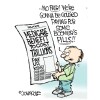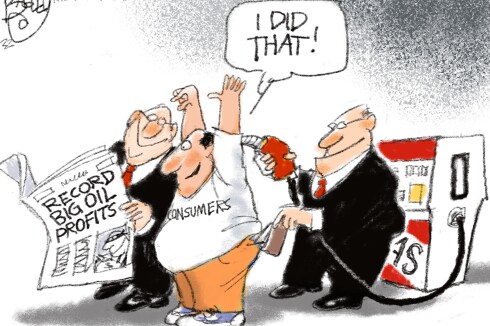In a store a while ago, I picked up a book titled, “History of Heartbreak: 100 Events That Tortured Minnesota Sports Fans.” Gee, I thought, how did they narrow it down to 100?
The Vikings’ blowout loss to the Los Angeles Rams wasn’t the emotional gut punch that Gary Anderson’s missed field goal was back in 1998, but that is partly because we’re now so used to gallant failure. The Vikings have the eighth-highest regular-season winning percentage in NFL history but haven’t been to a Super Bowl since Marilyn McCoo and Billy Davis Jr. were on top of the Billboard Hot 100 with, "You Don't Have to Be a Star (To Be in My Show)."
ADVERTISEMENT
Research indicates that Minnesotans looking for the cause of this underachievement might want to investigate the state’s high taxes.
In a 2018 paper, “ Touchdowns, Sacks and Income Tax — How the Taxman decides who wins the Super Bowl ,” economist Matthias Petutschnig examined data for a 23-year period from 1994 to 2016 and found “a significant negative relation between the amount of the net (after-tax) salary cap represented by the personal income tax rate of the teams’ home states and the success of the teams.”
Why would tax rates affect results on the gridiron? The NFL’s salary cap limits what each team can spend on player salaries. This season’s $255.4 million cap works out at an average of $4.8 million per player for a 53-man roster.
But that is gross pay; it doesn’t account for state income taxes. In higher-tax states like Minnesota, more of that gross income goes toward state taxes than in lower-tax states like Florida. To offer the same net pay as a Florida team, a Minnesota team must offer higher gross pay. But that comes out of the $255.4 million cap, reducing the amount available to attract players: “This reduces the average talent level of the whole roster of a team in a high tax state and diminishes its chances of winning,” Petutschnig writes.
Another 2018 paper supports this. “ State Income Taxes and Team Performance: Do Teams Bear the Burden? ” by economist Erik Hembre investigates “the effect of income tax rates on professional team performance using data from professional baseball, basketball, football, and hockey leagues.”
“Regressing income tax rates on winning percentage between 1995 and 2017,” Hembre writes, “I find robust evidence of a negative income tax effect on team performance.”
Three points lend credence to Hembre’s findings. First, looking at college games, where the athletes are unpaid, we would expect this effect to be absent. Indeed, Hembre finds that college teams in low-tax states performed no better than college teams in high-tax states. Second, of the leagues examined, teams’ results were the least correlated with their states’ tax rates in baseball. This, again, is what you would expect: There is no limit on the salaries MLB teams can pay, so baseball franchises in high-tax states don’t face the constraint of a salary cap. Third, when Hembre pushed the analysis back to 1977, he finds that “the income tax effect only arose after players gained unrestricted free agency, allowing them to shift the income tax burden on to teams.”
ADVERTISEMENT
It would be absurd to argue that tax rates are the only factor driving team performance. But it would be equally silly, given the evidence, to argue that they are not a factor at all. We know anecdotally that taxes are a factor in the location decisions of top players. The evidence presented in these two papers seems to bear that out.
Without a change of course in St. Paul, the legendary suffering of Minnesota’s sports fans will likely continue, and more candidates can be included in that “History of Heartbreak” book.
John Phelan is an economist at the Center of the American Experiment (AmericanExperiment.org), a conservative, or free-market, public-policy think tank based in Golden Valley, Minnesota. He wrote this exclusively for the News Tribune.












